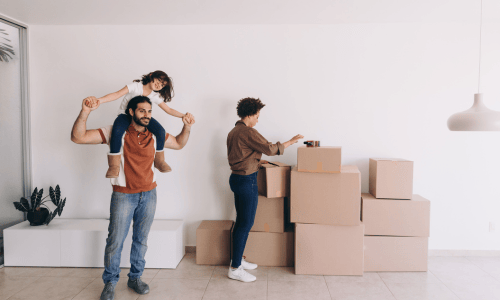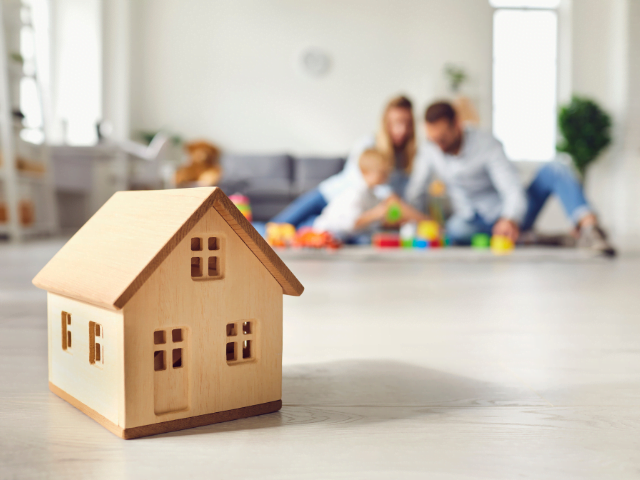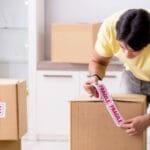Moving to a new home in Edmonton? Safety should be your top priority. As expert movers in Edmonton, Stallion Moving and Storage knows that a safe home is a happy home. This guide will help you check each room for potential hazards.
These tips will make your new house safer whether you’re using our long-distance moving services or just moved locally. We’re not just the best moving and storage company in Edmonton – we care about your safety too.
Let’s go through your home, room by room, and make it secure for your family.
Kitchen Safety Checklist
The kitchen is often called the heart of the home, but it can also be a place of potential hazards. Here are five crucial safety checks for your kitchen:
Check for Gas Leaks
If you have gas appliances, test them for leaks using a gas leak detector or call a professional. Regular checks prevent dangerous situations and protect your family from harmful gas exposure. Make this a routine part of your home maintenance to ensure ongoing safety in your kitchen.
Install a Fire Extinguisher
Keep a fire extinguisher in an easy-to-reach spot in your kitchen. Ensure everything you should know about moving in the edmonton. Check it regularly to make sure it’s in working order. This simple step can prevent a small fire from becoming a major disaster.
Use Child-Safety Locks
Install child-safety locks on all kitchen cabinets, especially those containing cleaning supplies, sharp objects, or potentially harmful chemicals. This precaution is crucial if you have young children or if children visit your home. Remember to keep these cabinets closed when not in use.
Test GFCI Outlets
Ground Fault Circuit Interrupter (GFCI) outlets prevent electric shocks in areas prone to water exposure. Test these outlets monthly by pressing the ‘test’ and ‘reset’ buttons. If they’re not working correctly, replace them promptly. This simple check can prevent dangerous electrical accidents in your kitchen.
Keep Air Flowing
Ensure your kitchen has good ventilation to reduce fire risks and keep the air clean. Clean or replace range hood filters regularly. Check that your kitchen has adequate airflow to remove cooking fumes and prevent the buildup of harmful gases. Good ventilation also helps control moisture, reducing the risk of mold growth.

Bathroom Safety Checklist
Bathrooms, while necessary for hygiene and relaxation, can be surprisingly hazardous. Here’s how to make your bathrooms safer:
Use Non-Slip Mats
Place non-slip mats in the tub, shower, and on the bathroom floor. These provide traction on wet surfaces, significantly reducing the risk of slips and falls. This is especially important for children and older adults. Choose mats with strong suction cups for bathtubs and showers.
Lock Up Medicines
Install childproof locks on medicine cabinets to keep medications and potentially harmful substances out of reach. Regularly check and safely dispose of expired medications. Keep all medicines, including over-the-counter drugs, in their original containers with labels intact. Consider using a locked box for extra security.
Look for Mold
Regularly inspect damp areas in your bathroom for signs of mold growth. Check corners, under sinks, and around the bathtub or shower. If you spot mold, clean it up quickly using appropriate products. Addressing mold promptly prevents health issues and structural damage to your home.
Check Bathroom Fans
Ensure your bathroom exhaust fans are working properly to remove excess moisture. Test them monthly by holding a piece of toilet paper up to the fan; it should stick when the fan is on. Clean the fan covers yearly to maintain efficiency. Proper ventilation prevents mold growth and maintains good air quality.
Find and Fix Leaks
Regularly inspect under sinks, around toilets, and near shower areas for signs of water damage or leaks. Fix any leaks promptly to prevent mold growth and water damage. Pay attention to any unusual water stains on walls or ceilings, as these could indicate hidden leaks.
Living Room Safety Checklist
The living room is where families often gather to relax, but it still requires attention to safety. Here are five key safety measures for your living room:
Secure Big Furniture
Anchor large pieces of furniture like bookcases, dressers, and TV stands to the walls. This prevents them from tipping over during earthquakes or if children try to climb on them. Use appropriate anchoring devices based on your wall type and the weight of the furniture.
Cover Electrical Outlets
Install outlet covers to protect curious children from electric shocks. Choose covers that are difficult for small hands to remove but easy for adults to use. Remember to cover all unused outlets, including those partially hidden behind furniture. Replace any damaged outlet covers promptly.
Make Sure Windows Lock
Check all window locks in your living room to ensure they’re functioning properly. This keeps intruders out and prevents children from falling out. Consider installing window guards for added safety, especially on upper floors. Teach older children how to operate the locks and guards in case of emergencies.
Put Up Smoke Detectors
Install smoke detectors on every level of your home, including the living room. Test them monthly and replace batteries yearly. Consider interconnected smoke detectors for the best protection – when one detects smoke, they all sound the alarm. Keep detectors clean and free from dust for optimal performance.
Keep Paths Clear
Maintain clear walkways in your living room by keeping them free of cords, toys, and other clutter. This reduces the risk of trips and falls, especially for older adults or during nighttime. Use cord organizers to keep electrical wires tidy and out of the way. Encourage family members to put away items after use.
Bedroom Safety Checklist
Bedrooms should be havens of rest and relaxation. Ensure they’re also safe with these key checks:
Use Carbon Monoxide Detectors
Install carbon monoxide detectors near sleeping areas to alert you to the presence of this odorless, colorless gas. Test the detectors monthly and replace batteries as needed. If the alarm sounds, leave the house immediately and call emergency services. Remember, you can’t smell or see carbon monoxide.
Look at Electrical Cords
Regularly inspect all electrical cords in bedrooms for signs of wear or damage. Replace any frayed or exposed wires immediately. Avoid running cords under carpets or furniture to prevent overheating. Use surge protectors for electronics and unplug devices when not in use to prevent electrical fires.
Secure Heavy Furniture
Anchor dressers, bookcases, and other tall furniture to the walls. This prevents them from tipping over if a child climbs on them or during seismic activity. Use appropriate anchoring devices based on the furniture weight and wall type. Check the stability of furniture regularly, especially after moving items.
Make Sure Windows Open Easily
Ensure that bedroom windows can be easily opened from the inside for emergency exits. If you have security bars, make sure they have a quick-release mechanism that all family members can operate. Practice opening windows and security bars with family members so everyone knows how to exit quickly.
Choose Safe Bedding
Select bedding materials that are flame-resistant to reduce fire risks. Keep space heaters at least three feet away from beds, curtains, and other flammable items. Avoid smoking in bed, as this is a common cause of bedroom fires. Consider using flameless candles instead of traditional ones for ambient lighting.
Final Thoughts
Stallion Moving and Storage is committed to your safety beyond the moving process as professional movers in Edmonton. We hope this guide helps you create a secure environment in your new home. Remember, regular safety checks are key to maintaining a safe living space for you and your loved ones.
Frequently Asked Questions
What Safety Checks Should New Homeowners Prioritize?
New homeowners should prioritize inspecting smoke detectors, carbon monoxide detectors, electrical wiring, and fire extinguishers. It’s also important to check for structural issues, secure entry points like doors and windows, and ensure proper ventilation in all rooms.
How Often Should Smoke and Carbon Monoxide Detectors Be Tested?
Both smoke and carbon monoxide detectors should be tested at least once a month. Batteries should be replaced twice a year, and the entire unit should be replaced every 10 years for smoke detectors and every 5-7 years for carbon monoxide detectors.
What Should I Look for When Inspecting the Electrical System?
Check for outdated or faulty wiring, exposed wires, overloaded circuits, and ensure that outlets are properly grounded. It’s also a good idea to verify that Ground Fault Circuit Interrupters (GFCIs) are installed in bathrooms, kitchens, and other areas with water exposure to prevent electrical shocks.
What Are Some Common Hazards to Watch Out for in the Kitchen?
In the kitchen, make sure gas lines are properly sealed if you have gas appliances, and ensure the range hood is venting correctly. Inspect electrical outlets near the sink, and make sure there is a fire extinguisher readily available in case of grease fires.
How Can I Make My Home More Childproof and Safe for Pets?
Install safety latches on cabinets, outlet covers, and corner guards on sharp furniture edges to childproof your home. Secure heavy furniture and televisions to the wall to prevent tipping. For pets, make sure poisonous plants or hazardous materials are out of reach, and that outdoor areas are fenced securely.






